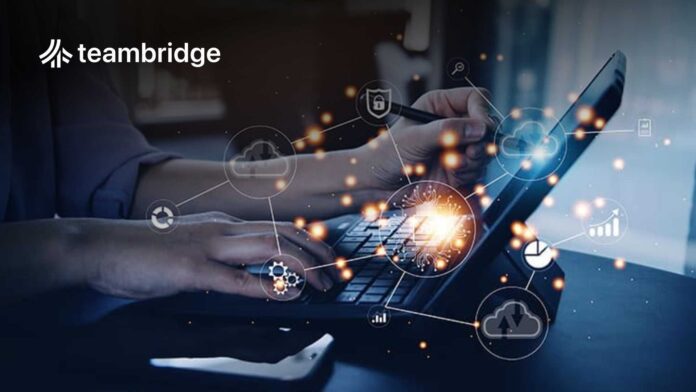For decades, AI innovation has largely catered to office workers—those behind desks, not on factory floors. But Teambridge wants to change that. The company has launched Teambridge AI, the first outcome-oriented AI platform purpose-built for the contingent workforce—the nurses, field techs, event staff, and manufacturing teams who keep business operations running but rarely see cutting-edge tools designed for them.
According to Gallup, white-collar workers are three times more likely to use AI than blue-collar workers. And the gap might be even larger than reported. “For too long, the technology supporting frontline teams has been stuck in the past,” said Tito Goldstein, CEO and Co-Founder of Teambridge. “AI is best suited to the realities of large, dynamic workforces—speed, scale, and adaptability. For Teambridge customers, it’s a competitive edge.”
Closing the AI Gap for Frontline Operations
Teambridge’s launch isn’t just about adding automation to staffing software—it’s a rethink of how AI should function in high-volume, constantly shifting environments. Where most tools handle reporting after the fact, Teambridge AI is built to predict, act, and optimize before problems escalate.
The platform integrates directly into existing staffing workflows and emphasizes outcomes, not just efficiency metrics. It combines AI agents, workflow automation, and policy enforcement to help organizations fill roles faster, maintain compliance, and minimize costly human errors.
Inside Teambridge AI: The Four Core Engines
Teambridge AI’s capabilities are organized around four key pillars:
-
Policy Builder: A rules engine that enforces compliance automatically—covering union contracts, licensing, scheduling limits, and credentialing.
-
Ponder: A real-time analyst that explains workforce trends and can trigger actions like creating shifts or contacting candidates.
-
Automation Engine: The workflow layer that launches AI agents the moment conditions are met, ensuring processes move forward without manual oversight.
-
Specialists: Customizable, no-code AI agents that handle repetitive tasks in recruiting, scheduling, credentialing, and client communications.
The system’s design makes it stand apart from “ChatGPT-wrappers” that layer AI onto old workflows. Teambridge AI is native to the operational core, turning best practices into automated execution.
Real-World Impact: From Manual to Machine Speed
Early adopters are already seeing what this looks like in practice. Matt Strange, COO of Procare HR, called the platform “a game changer.” His teams spend hours juggling manual scheduling, credential verification, and workforce data. “Being able to leverage real-time data and identify trends will be impactful and meaningful for our clients,” Strange said.
For industries facing labor shortages and volatile demand—healthcare, logistics, hospitality—Teambridge AI could redefine how flexibility and compliance coexist.
The Bigger Picture: AI for the People Who Keep the Lights On
AI adoption has largely ignored frontline workers, the same people responsible for essential services. By focusing on outcome-driven automation and integrated compliance, Teambridge is betting that empowering the contingent workforce will be the next major frontier in enterprise technology.
If the company’s vision holds, Teambridge AI could do for shift-based work what Salesforce did for CRM—turn a messy operational reality into a scalable, intelligent system.
Join thousands of HR leaders who rely on HRTechEdge for the latest in workforce technology, AI-driven HR solutions, and strategic insights







